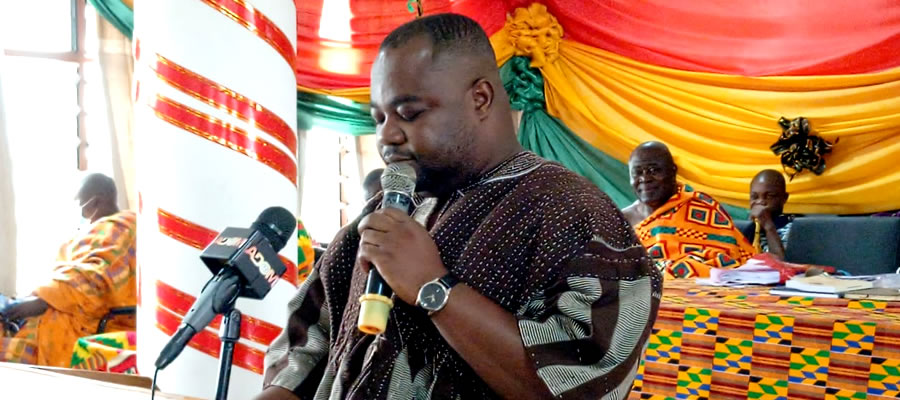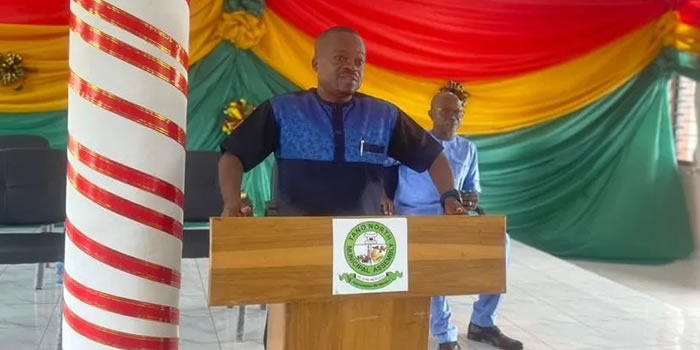

Vulnerability Analysis
Vulnerability Analysis involves the examination of the capacity of individuals and groups to anticipate, cope with, resist and recover from shocks or risks. People become prone to the potential of being harmed as a result of social, economic, environment and physical factors. That is the likelihood that a shock will result in a decline in well-being of the household. Exclusion and lack of voice can also determine the extent of a person’s access to resources. Lack of voice and the inability to make recourse to justice can increase a person’s vulnerability to injustice and corruption and thus exclusion.
Vulnerable and Excluded Groups
Groups which have been identified as vulnerable and excluded in the Municipal include; children in difficult circumstances (those from low income and broken homes and orphans). These children are likely to suffer from malnutrition or be involved in economic activity at an early age (child labour/street children), adolescent girls (those from low income and broken homes and single mothers as well as commercial sex workers). Other categories include, Persons living with HIV/AIDS (PLHIVA), the aged, persons with disability (PWDs), women and unemployed youth. Subsistence food/vegetable farmers were also identified as vulnerable and excluded.
Types of shock facing households in the Municipal
The Municipal is agrarian and also dependent on rainfall for production. As a result the major shocks affecting food availability, incomes and wealth accumulation are those that relate mainly to crop production. The economic activities that individuals and household are involved in also determine to a large extent vulnerability to income and asset loss in the Municipal. Three main types of shocks affecting most families in the Municipal relate to the areas of food insecurity, human insecurity and job insecurity. Household also face a wide variety of shocks ranging from natural events to man-made (that is conflicts, policy induced, terms of trade shocks, illness and deaths).
The most cited shocks are production related. This may occur as a result of crop failure due to poor rains affecting harvests or pest invasion affecting storage, fluctuating prices of agricultural produce like maize and tomatoes and inadequate storage and processing facilities, increased harvest usually end up in glut of produce and low prices. Due to the increase in major food prices also on the contrary, reduced the real income of food farmers. This was partly explained by the fact that farmers tend to sell off their produce immediately after harvest to meet urgent social obligations, when prices are low. Farmers, especially subsistence ones, are forced to buy back the produce during the lean season, when prices are at their highest levels
Other shocks cited include illness, job loss and disability of income earner, loss of asset due to disease (death of livestock) or bushfire, or theft. Conflicts resulting from chieftaincy disputes and insecurity of land tenure were also cited as shocks. The seasonality in agricultural production and the lack of non-farm income generating opportunities leaves most farmers and labourers without work during periods of the year. Some of the private sector employees and the self-employed have gone through periods of inactivity due to ill-health, infrequency in the demand for their services or the seasonal nature of their jobs. At the community level most communities reported of events relating to rainstorms that affect houses including schools and other individual and community’s building as well as flooding during the peak rainfall periods.
Coping Strategies/ Impacts of shocks
Within the Municipal, most poor households respond to shocks by recourse to self-help coping strategies like selling of assets or livestock and informal insurance mechanisms. The non-poor also use both self-help mechanisms, as well as market-based strategies such as falling on savings and banks loans. Majority of household do not use formal insurance mechanisms. The extent to which the affected household or individual can gain access to credit, private transfer or public safety nets to help maintain consumption, may determine the type of response. When it is not possible to access any public safety nets or sufficient credit to maintain current consumption, recourse may be made to other strategies that either directly or indirectly reduces assets or further consumption. This situation tends to further worsen the individual or households vulnerability to poverty.
It is therefore necessary to re-assess the strategy mix to address the vulnerable and excluded in the Assembly’s development agenda, by providing safety nets to protect incomes from falling below unbearable levels. This may include the provision of a guaranteed minimum price for selected agricultural produce like maize and tomatoes. Current disaster management programmes need to be strengthened and the role of social assistance expanded. Greater collaboration between agencies/ organisations for the sector needs to be promoted to enhance effectiveness of assistance. Reliable data on the vulnerable, excluded and disadvantaged persons need to be addressed.
Social Protection (LEAP)
Tano North Municipal is a beneficiary to the Livelihood Empowerment Against Poverty (LEAP) programme. LEAP is a cash transfer programme which is meant to reduce poverty amongst extremely poor households which have orphans and vulnerable children, severely disabled persons without productive capacity and aged persons above 65 years. Currently, the number of beneficiary households is 98 in 13 communities. The beneficiary communities are Subonpang, Tanokrom, Asukese, Onwe-Nkwantabisa, Bommoden, Susuanho, Terchire, Afrisipa, Kotwe-sukuum, Yamfo, Duayaw-Nwanta Zongo, Duayaw Nkwanta-Jerusalem, and Santase. The amount paid to these beneficiaries ranges from GH¢ 64.00, GH¢76.00, GH¢88.00 and GH¢106.00 for one, two, three, four and more beneficiary household respectively.
The Municipal benefitted from LEAP in 2015 since as at 2014 it was on a plot base. In 2015, 94 households were paid an amount of GH¢ 11,698.00 whiles GH¢ 346.00 remain unpaid to 4 beneficiaries.
In 2016, 93 households were paid an amount of GH¢ 37,988.00. Five (5) beneficiaries were not paid because they had no ezwich cards. In 2017, 97 households were paid. The remaining one household’s e-zwich cards have not been credited with funds upon several complains to the LEAP Management secretariat.
Disability
Persons with disability were defined as those who were unable to or were restricted in the performance of specific tasks or activities due to loss of function of some part of the body as a result of impairment or malformation. Data from the 2010 Population and Housing Census show that 1,700 of the Municipal population representing 2.1 percent had some kind of disabilities including visual/sight impairment, hearing impairment, mental retardation, emotional or behavioral disorders and other physical challenges. This means that one person out of every fifty people in the Municipal have one kind of disability or the other.
The figure below indicates that 2.1 percent of the total population has one form of disability or another. The proportion of females with disability is 2.2 percent whiles that of males with disability is 2.1 percent. The commonest type of disability is Physical (37.9%) and Sight (34.9%). Females (42.5%) are more challenged by Physical disability than males (33.6%). On the other hand, Sight is the commonest form of disability among males (36.3%) compared with females (33.6%).
Negative attitude towards disability
The assembly is engaged in series of activities to reduce stigma and discrimination among PWDS. It is in line with this that the assembly through the department of social welfare organises talks and public shows to educate parents, guardian and citizens of the Municipal on the effects of negative attitude towards PWDS. Although the Municipal takes the lead to reduce negative attitude toward PWDS, there still exist myths surrounding the situation as a taboo and a punishment from god. PWDS are not considered in decision making at all levels, the education of PWDS is taken for granted especially those with difficulty seeing and strange behaviors.
Surprisingly, most families still hide PWDS and prevent them from interacting with the rest of the people in the Municipal. This attitude has led to a low standard of formal education among PWDS in the Municipal, high dependency among PWDs, low skill development and aggravated emotional pain.
In 2017, a data base of six hundred and fifteen (615) persons with disabilities (PWD’s) was created. The breakdown is as follows 240 males, 285 females and 90 children were conducted in the Tano North Municipal in 41 communities
Date Created : 11/23/2018 5:58:48 AM












 facebook
facebook
 twitter
twitter
 Youtube
Youtube
 +233 593 831 280
+233 593 831 280 0800 430 430
0800 430 430 GPS: GE-231-4383
GPS: GE-231-4383 info@ghanadistricts.com
info@ghanadistricts.com Box GP1044, Accra, Ghana
Box GP1044, Accra, Ghana